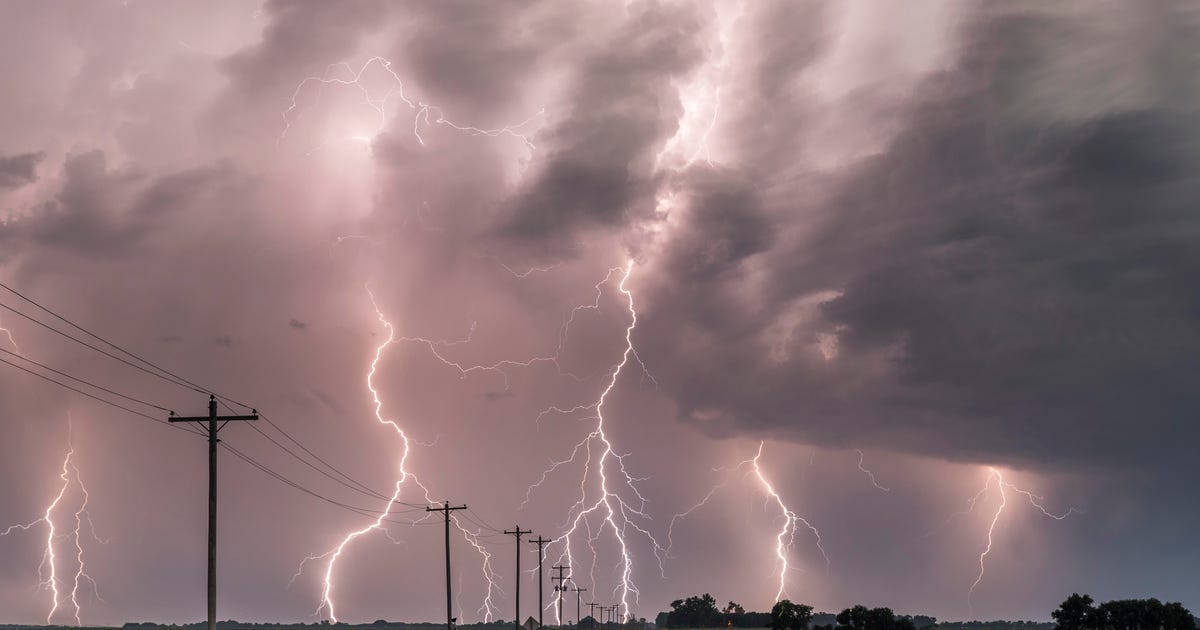How to prepare for hurricanes how do you prepare for hurricanes how would you prepare for a hurricane how can you prepare for hurricanes how to prepare for an hurricane how to be prepare for a hurricane mississippi prep hurricanes how to prep for an interview how to prep for the lsat how to prep for nuclear war how to prepare a turkey how to get free robux

How to Prep for Hurricanes, Wildfires, Storms and Other Natural Disasters
Wildfire season has already wiped out more than 5 million acres of land in the US so far this year. With a report of heightened risks of blackouts throughout large parts of the country this summer -- and climate change introducing more frequent and more severe storms -- we wanted to provide an overview of the most common natural disasters in the US.
Here we'll detail what weather events are most likely to occur, as well as when and where. We'll also share resources on how to prepare for a major climate event and what to do in the aftermath of one.
Keep in mind that due to the shifting severity of the climate crisis, the "season" for some of these disasters is also evolving. Wildfire season used to generally take place between May and October, but in recent years devastating fires have occurred late in the year and early before the "official" season has begun.
Use this information as a general guide so you can plan ahead where you live -- and know what to expect if you travel to another region in the US during a natural disaster season.
Common natural disasters
Let's explore the most frequent natural disasters in the US, when their seasons typically take place and where they occur. Again, keep in mind that these events can happen at any time of year, but are most active during a particular season. We'll also link to resources detailing how to prepare for one of these weather events, and what to do if one affects your home.
Hurricanes
Hurricanes, also knowns as tropical cyclones, have slightly different seasons in the US depending on the region, according to the National Oceanic and Atmospheric Administration. On the Atlantic coast, hurricane season begins June 1 and runs through Nov. 30. Eastern Pacific hurricane season lasts a little longer, starting on May 15 and continuing through November. A National Oceanic and Atmospheric Administration report predicts this year's Atlantic season will experience above-average hurricane activity.
Read about how to prepare for hurricane season in this guide.
Floods
Flooding is the most frequent natural disaster in the US, according to Ready.gov, and isn't limited to a particular area or region of the country. Similarly, floods don't take place during a particular season, as rain and snow events can lead to a sudden overflow of water at any time. Flash floods are projected to worsen this century due to climate change, based on an April study published in Nature.
Learn how to protect your home from water damage in our flood prevention checklist.
Tornadoes
In the US, tornadoes are most likely to occur in the Southeast and Midwest regions. While there's no set tornado season, the majority take place in the spring and summer, with May being the most active month for tornadoes.
Find out how to use your phone to stay safe during a tornado or other natural disaster.
Wildfires
Wildfires mainly affect the western US, where drought conditions increase the risk. This year, though, we've already had wildfires in states like New Hampshire and Arkansas. New Mexico has been particularly hard-hit this year, with over 600,000 acres lost to wildfires so far. Most wildfires happen between May and October, but have experienced more earlier and later in the season in recent years.
There are a lot of steps you can take to protect your home if you live in an area prone to wildfires. Start with our comprehensive guide on how to prepare for wildfire season.
Droughts
Large parts of the western US are currently experiencing drought. The US Drought Monitor lists many of those areas as "severe," "extreme" or "exceptional," with exceptional being the most serious level of drought. The drought conditions in the southwestern US are the worst in over 1,200 years, according to a study by UCLA. Satellite images of Arizona and Utah's Lake Powell show clear signs of the lake's decreasing water levels over time.
Read more about the drought affecting the West, including the current conditions and how to track them to stay up to date.
Earthquakes
Earthquakes can happen during any time of the year and most take place in an area known as the "Ring of Fire," according to the US Geological Survey. This area extends well beyond the US, but encompasses the entire West Coast all the way to Alaska. Most US earthquakes occur in Alaska and California.
Check out our earthquake preparedness guide to learn more about how to stay safe during an earthquake.
Final thoughts
Shifting weather patterns mean we have to adapt to the increase of storms and other natural events. Fortunately, there are many steps you can take to protect yourself and your home from a natural disaster. Here are some additional resources:
For even more details on natural disasters and how to prepare beforehand or respond after an event takes place, check out Ready.gov.
Source


